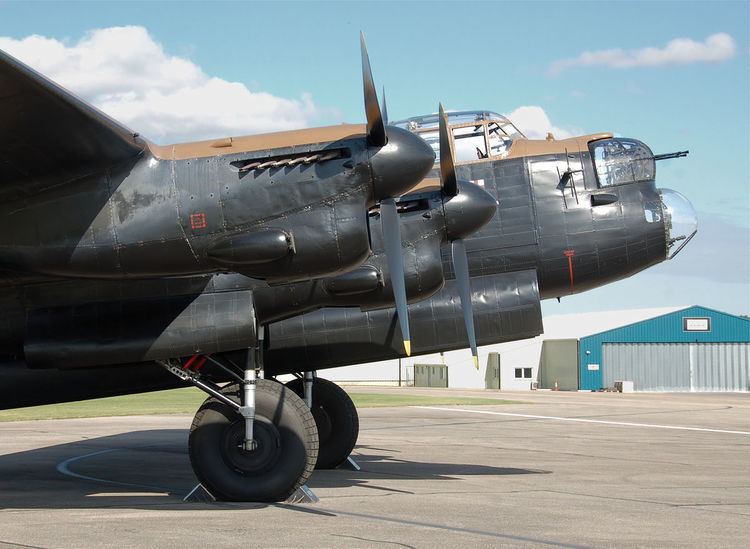 | ||
A nose gunner or front gunner is a crewman on a military aircraft who operates a machine gun or autocannon turret in the front, or "nose", of the airplane. This position could be manned by someone who was a dedicated gunner, however, it was more common for him to have a dual role, the gunnery being a secondary position (i.e. his primary task is navigator, bombardier, most commonly). This is different from fixed guns mounted in the nose and fired by the pilot or co-pilot, since those do not require a nose gunner. Manned nose guns were most common during WWI and World War II, employed by both Allied and Axis forces. Early in WWI, nose-gunners enjoyed a period of popularity on pusher-engined fighters; a gunner would be stationed in the nose, covering the arc ahead of the aircraft. Once the synchronizer was invented, allowing a fixed machine gun to fire through the propellor, the pusher-engined fighter fell into disuse, although nose guns were still commonly seen on multi-engine bomber aircraft.
Contents
WWI
Interwar
WWII examples
During World War II, many aircraft were equipped with flexible (aimable, as opposed to fixed) machine guns and cannon for protection against other aircraft. The most common and basic of these was the rear gun or "tail gun", to cover the upper-rear arc of fire. In its basic form, this was a second crew member behind the pilot with a single machine gun, as was seen all through WWI and onward; more complex aircraft might have a gunner located in the actual tail of the aircraft, giving a wider arc of fire and freeing them from the danger of hitting their own tail surfaces. Rear guns could be found in aircraft of many different sizes and types. The nose gun was perhaps the second most common position, although almost exclusively used in multi-engine aircraft, due to the difficulty in firing a flexible gun through the propeller arc or fitting a nose gun position at all with an engine filling the nose area. Twin engine aircraft were ideal for fitting a defensive nose gun, especially since many already had a bombardier (bomb-aimer) located in the nose area. These could range from a simple machine gun on a ball socket in the glazing of the cockpit windscreen (Ju 88), or similar mountings in the nose glazing (early B-17, B-24, G4M, Ki-48, Halifax, etc), up to power operated manned turrets (late B-24, Avro Lancaster, Vickers Wellington), or even basic remotely controlled turrets such as seen on late B-17's, and more complex ones such as those used on the He 177 and the B-29 (which had a gun-aiming sight, but no actual guns in the nose).
